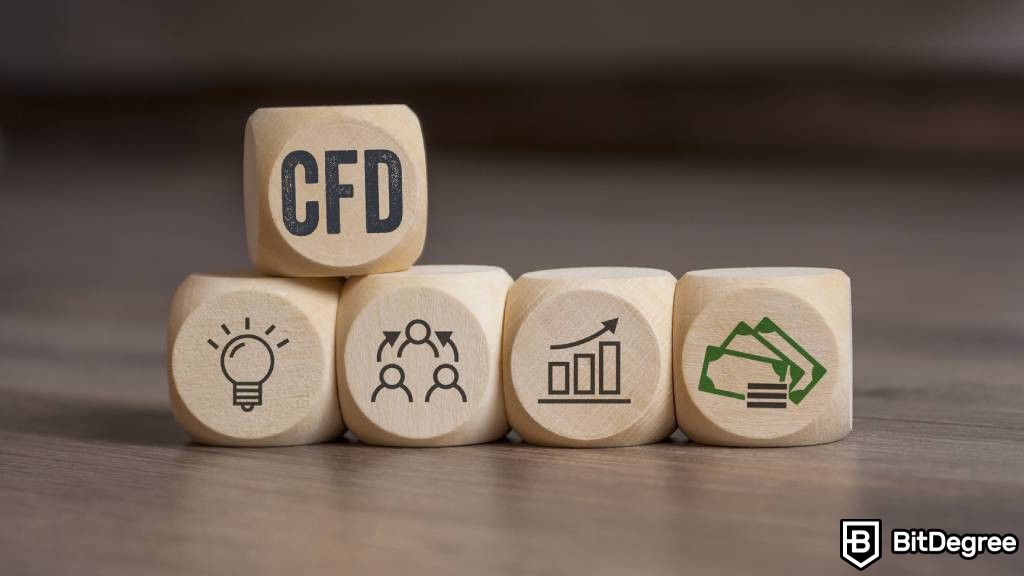Key Takeaways
- Bitcoin CFD trading lets you benefit from its price changes without needing to own any BTC directly;
- Bitcoin CFD usually offers high leverage that can increase your potential gains, but it can also amplify your potential losses;
- Although Bitcoin CFD offers many benefits, it also carries some risks, including leverage, volatility, and counterparty risk.
Stop overpaying - start transferring money with Ogvio. Sign up, invite friends & grab Rewards now! 🎁
The rise of cryptocurrencies has created exciting opportunities for people to earn potential income. Some platforms now allow you to make profits from cryptocurrency without actually owning any digital assets. One popular method is through Bitcoin CFD.
Using CFD Bitcoin trading, you can profit from Bitcoin's price movements. However, for crypto newcomers, the wild volatility of the market and the complexity of Bitcoin CFD may sound overwhelming.
But don't worry! In this beginner's guide, I'll break down everything you need to know, from the basics of how CFD works to potential benefits and involved risks. I'll also provide tips and strategies to boost your confidence as you navigate the crypto market.
In the end, you can decide if CFDs are the right instrument for you. If you prefer to actually own the crypto assets, be sure to store them in a secure and trusted wallet like Ledger Nano X or Ledger Nano S Plus.

Did you know?
Subscribe - We publish new crypto explainer videos every week!
What is Terra Luna? History & Crash Explained (ANIMATED)


Table of Contents
- 1. What is Crypto CFD?
- 1.1. CFD VS ETF
- 2. What is Bitcoin CFD?
- 2.1. Traditional VS CFD Bitcoin Trading: Key Differences
- 2.2. Related Fees for Bitcoin CFD Trading
- 3. Benefits of Bitcoin CFD Trading
- 4. Drawbacks of Bitcoin CFD Trading
- 5. How to Start Trading Bitcoin CFDs
- 6. CFD Bitcoin Strategies and Tips
- 6.1. CFD Bitcoin Trading Strategies
- 6.2. CFD Bitcoin Trading Tips
- 7. Conclusions
What is Crypto CFD?
Essentially, a contract for difference (CFD) is a contract that specifies a buyer's commitment to pay a price difference if an asset's valuation changes. This financial contract allows you to "bet" on cryptocurrency price changes without holding the underlying assets. For example, you're "betting" on BTC price in Bitcoin CFD.
Latest Deal Active Right Now:It's similar to speculating on whether the price of Bitcoin, Ethereum, or other digital currencies will increase or decrease without purchasing or storing them. In crypto CFD, you enter into a contract with a broker, committing to settle the price difference between the time you open and when you close the transaction.
It might be a new method to navigate the cryptocurrency market, but the concept itself has a long and established history in traditional financial markets. Traders have regularly used CFDs in traditional financial markets to hedge against various risks[1].
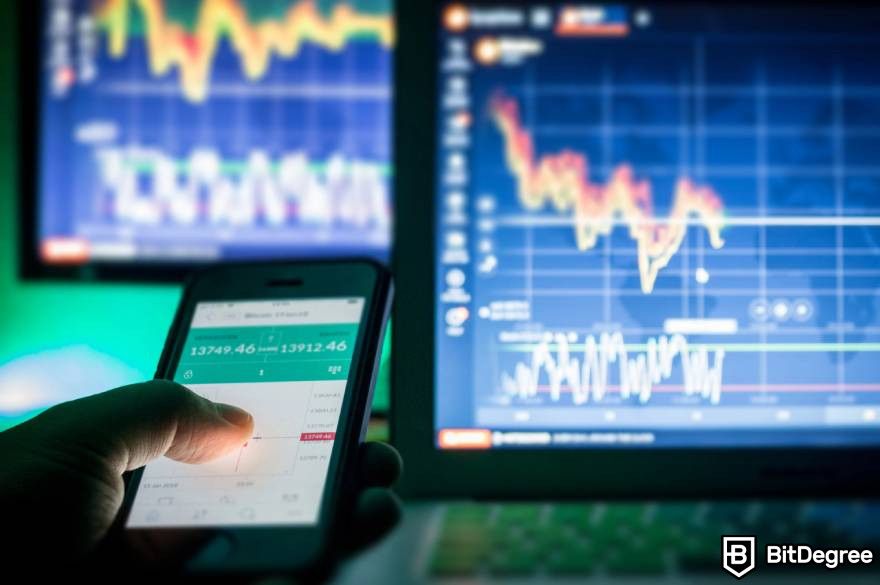
You can use a traditional CFD to "go short" on a certain asset (stock, forex, or commodity) and make a bet that the price will decrease. If it does, you'd make money on the CFD based on the asset price differences.
While cryptocurrency CFDs are a relatively new application of an existing concept, they offer a similar way to participate in the price movements of an asset. The key difference is the underlying asset, which is a cryptocurrency.
CFD VS ETF
Both Contracts for Difference (CFDs) and Exchange Traded Funds (ETFs) are common financial tools, each with their own attributes and features. Understanding them can help you to make informed and strategic financial decisions.
Here are some of the key differences between CFDs and ETFs.
Ownership
With crypto CFDs, you don't actually acquire any cryptocurrency (or whatever the underlying asset may be). Instead, you're making a deal to predict where its price is headed. On the other hand, when you buy an ETF share, you indirectly own a tiny slice of the assets.
High Leverage
CFDs are well-known for offering high leverage, allowing you to conduct large transactions with a smaller amount of money. On the other hand, regular ETFs don't provide leverage, but in some cases, you may find leveraged ETFs out there.
Fees
When you trade CFDs, it's important to think about all the costs involved. This includes the spread, commission fees charged by your broker, and potentially overnight financing charges if you keep a position after the market closes.
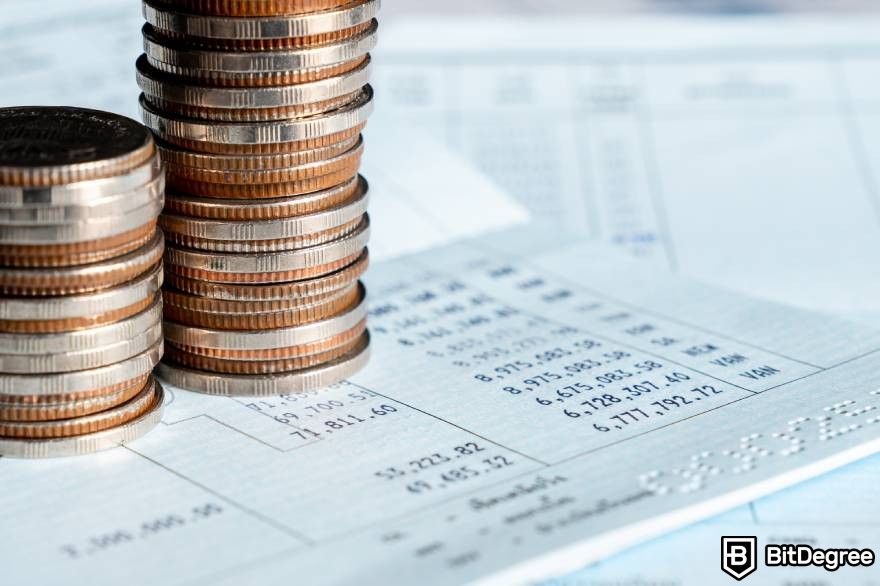
ETFs generally have lower management fees compared to CFDs. However, it's good to keep in mind that you'll still have to pay brokerage commissions when buying or selling ETFs. Depending on the ETF's structure, there might be other fees to consider, like expense ratios or fund-specific charges. It's wise to be cautious about these potential additional fees.
Trading Flexibility
CFDs provide you with significant trading flexibility. You may readily enter the market for the long position or short sell, providing you with the opportunity to profit during both upswings and downturns. In addition, CFDs sometimes allow you to trade outside of regular market hours, giving extra opportunities to make potential gains.
On the other hand, while it's possible to short an ETF, the process is quite complicated and is not commonly used for short selling. ETFs, like stocks, often stick to normal exchange hours.
Risk Profile
Due to the leverage feature, CFDs have a higher risk, with the possibility of losing more than what you initially put in. On the flip side, ETFs are generally seen as a safer choice and provide diversity.
What is Bitcoin CFD?
To put it simply, Bitcoin CFD is a specific type of crypto CFD that focuses entirely on Bitcoin price swings. This can be a good option if you're particularly interested in Bitcoin's market without having to hold BTC directly in your cryptocurrency wallet.
Let's say that you see that Bitcoin's price is on the uptrend, and you estimate it's going to rise even higher. After making a thorough risk analysis, you contact a broker to purchase a CFD. You tell the broker how much you're willing to spend and whether you believe Bitcoin's price will increase (going long) or decrease (going short).
If your forecast turns out to be correct and Bitcoin's price goes up, you'll make a profit based on the price difference and the size of your contract. However, if your prediction is incorrect and Bitcoin's price goes down, you'll lose.
Traditional VS CFD Bitcoin Trading: Key Differences
Now that you know the tidbits about Bitcoin CFD and how it works, let's talk about the differences between traditional and CFD Bitcoin trading.
Bitcoin Ownership
In traditional Bitcoin trading, you directly buy and own the Bitcoin itself. This empowers you with complete control over your holdings. You can choose to store your Bitcoin securely in a reputable crypto wallet, like Ledger Nano X, allowing you to keep, transfer, or use it at your convenience.
On the flip side, Bitcoin CFD trading works differently. You don't acquire ownership of the actual Bitcoin. Instead, you get into a contractual relationship with a broker to speculate on Bitcoin price changes.
Leverage
Leverage shows a major distinction between the two trading approaches. Traditional Bitcoin trading usually uses no leverage; you can buy Bitcoin with the money you have in your pocket.
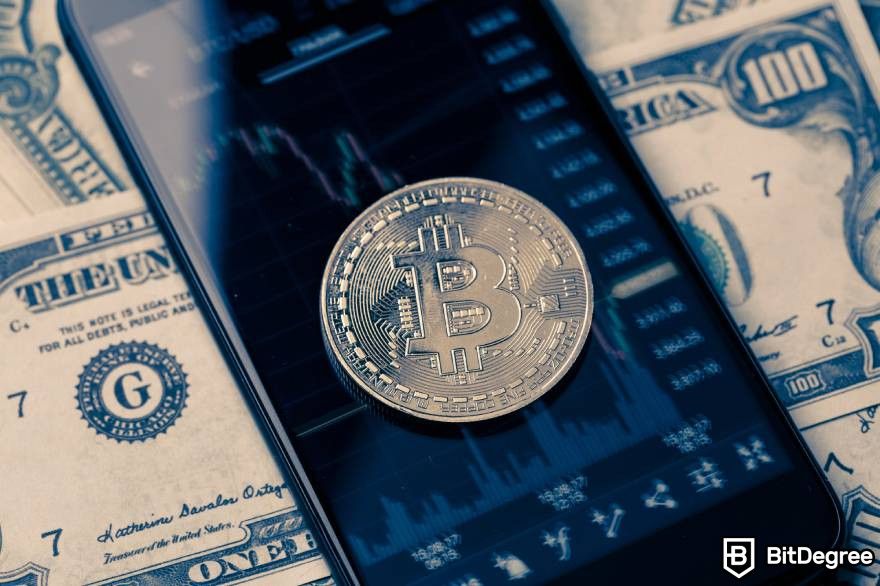
In contrast, Bitcoin CFD trading can involve leverage. This allows you to trade a larger position with a smaller amount of capital, amplifying your potential gains.
Leverage may be a powerful tool, but to avoid serious financial consequences, you need to carefully manage the risk before using it.
Regulation
Both BTC CFDs and conventional trading depend heavily on regional regulations. Traditional Bitcoin trading is subject to cryptocurrency legislation, which differs by region. As a BTC owner, you're responsible for security and compliance with these requirements.
It's not that different with Bitcoin CFDs. Depending on where they operate, brokers that provide CFDs may be subject to stringent regulatory restrictions. This regulatory system may provide you with extra protection, but it also puts duties on both brokers and you.
Related Fees for Bitcoin CFD Trading
There are additional costs to consider with Bitcoin CFD trading. Here's a breakdown of some common fees you might encounter.
Spread Fee
The spread is the difference between the buying price (ask price) and the selling price (bid price) of a BTC CFD. This is essentially the broker's commission for facilitating your trade. In simpler terms, it's like a built-in fee for every trade you make.
For instance, if the buy price of a Bitcoin CFD is $70,000 and the sell price is $69,950, the spread is $50. It should be noted that it's more common for CFD brokers to use a percentage spread, usually starting at 0.1%.
When you open a CFD position, you start with a small loss equal to the spread. In this case, the market price must move in your favor by an amount equal to the spread before you can start making a profit.
Overnight Fee
If you keep a Bitcoin CFD position overnight, you may be charged an overnight fee, also known as a swap fee. This fee is essentially the cost of borrowing the money to maintain your leveraged position.

The amount charged can vary based on the broker and the direction of your trade (long or short). These fees are usually a small percentage of the total value of your position and are charged daily.
Commission
While it's less common, some brokers may charge a commission fee on top of the spread for opening and closing your positions. Therefore, it's essential to carefully review the broker's fee structure before you begin cryptocurrency CFD trading.
Conversion Fees
If the currency of your trading account isn't the same as the currency you are trading in, you may be charged conversion fees. For example, if your account is in Euros and you trade Bitcoin CFDs priced in USD, the broker may impose a fee to convert between the two currencies.
Deposit and Withdrawal Fees
Although less common, some brokers may charge fees for depositing or withdrawing funds from your trading account. These fees can depend on the payment method (bank transfer, credit card, e-wallet, etc.) and can either be a fixed amount or a percentage of the transaction value.
Benefits of Bitcoin CFD Trading
Bitcoin CFD trading has many potential benefits that make it a popular choice for earning extra income. Here are some of the benefits:
- Flexibility of Going Long or Short
Unlike the traditional method of buying Bitcoin, where you profit only from price increases, BTC CFD enables you to "go short" and potentially earn from price drops. This flexibility can be appealing, especially if you think the market might decline.
- No Crypto Wallet Required
With Bitcoin CFDs, you don't need to worry about the security and management of a cryptocurrency wallet. CFDs are financial derivatives that reflect Bitcoin's price swings without needing you to own the underlying asset.
- Potential for Higher Gains With Leverage
Leverage allows you to control a larger Bitcoin position by using a smaller amount of your own capital upfront. This can magnify your potential profits if the market moves in your favor. However, it's crucial to understand that leverage also amplifies potential losses[2].
Drawbacks of Bitcoin CFD Trading
Although it comes with many benefits, Bitcoin CFD trading also has some drawbacks and potential risks. Let's take a look at what you should be aware of while using this approach.
- Leverage Risk
Leverage is a double-edged sword. It allows you to control a larger Bitcoin position by putting down a smaller amount of money, potentially amplifying profits when the market moves in your favor.
But, if the market goes against you, leverage can also significantly amplify your losses. It's essential to understand leverage and use it with caution. Even a slight price movement against your prediction could wipe out your margin deposit and lead to more losses.
- Market Volatility Risk
While leverage increases the risk of cryptocurrency CFD trading, the main concern here is the market's volatility. Bitcoin's value can fluctuate dramatically, so you might either make a significant profit or lose money.

If the market doesn't swing your way, you may find yourself on the losing end of the transaction, demonstrating how dangerous the volatility can be in crypto trading.
- Counterparty Risk
Another potential risk of Bitcoin CFD trading that you should be aware of is counterparty risk. It's often overlooked, yet it's rather important.
In CFD trading, you're entering into a contract with a broker, so the safety of your investment depends on the financial stability of the broker. If the broker faces financial trouble or fails to meet their obligations, you could end up losing a significant amount of money.
To keep yourself safe, it's crucial to choose a reputable and regulated broker with a strong financial standing. Make sure to do your research and due diligence before getting involved to mitigate counterparty risk.
- Complexity
Bitcoin CFD might be more difficult to grasp than simply buying and keeping BTC. Concepts like margin, leverage, overnight fees, and spread must be carefully evaluated. Understanding these concepts and their potential implications for your trades is essential before putting your money at risk.
How to Start Trading Bitcoin CFDs
So, we've covered the basics of Bitcoin CFD trading as well as its benefits and drawbacks. You might be wondering what you need to do to start trading BTC CFDs. Here are the fundamental steps to increase your trading success.
Step 1: Choosing the Right Broker
The first step is to choose a reliable broker that provides Bitcoin CFD trading functionality. Look for brokers that have been authorized by financial authorities, have positive customer reviews, and offer a user-friendly trading interface.
Step 2: Set Up and Fund Your Bitcoin CFD Account
Once you've selected a broker, go to their website and finish the registration process. This usually requires you to submit personal information, evidence of identification (ID), and proof of address.

Next, the broker usually needs to validate your identity and documents before creating your account. This may take some time, depending on the broker.
After your account has been validated, you need to fund it before you can start trading. Most brokers offer various funding options, including bank transfers, credit / debit cards, and electronic wallets like PayPal.
Step 3: Place Your First Trade
Now that you're familiar with the platform and have a solid strategy in mind, it's time to make your first trade! It may seem intimidating at first, but the process is actually pretty straightforward.
First, make sure to log in to your trading account and head over to the Bitcoin CFD section, usually found under the 'CFD' or 'Cryptocurrency' categories. It's important to have enough funds in your account to cover your trade.
Next, decide whether you want to go for a "buy" (long) position or a "sell" (short) position. If you think that Bitcoin's price will go up, go for a buy position. If you expect a decrease in Bitcoin's price, opt for a sell position.
Once you've made your decision, enter the amount you want to invest. This will be a portion of your account balance allocated to this specific trade. Consider how much you're willing to risk and ensure it aligns with your overall trading strategy and risk management plan.

To manage your risk effectively, it's essential to set your stop-loss and take-profit orders. A stop-loss is a pre-determined price at which your trade will automatically close if the market moves against you, serving as a safety net to limit potential losses.
On the flip side, a take-profit is a pre-determined price at which your trade will automatically close when the market moves in your favor, securing your profits. These methods are essential in protecting your investment and giving you peace of mind.
Before confirming your trade, take a moment to review all the details. Make sure you've selected the correct position type (buy or sell), double-check the amount you're investing, and verify that your stop-loss and take-profit levels are set according to your strategy.
Once you're satisfied with all the details, go ahead and confirm your trade to execute your order. This officially puts your position on the market.
Step 4: Monitor Your Trades
Once you've opened your trade by confirming the deal, you can keep an eye on it in real-time on the platform to track your investment. When you feel good about the profit you've made or want to limit any further losses, you can close your position.
CFD Bitcoin Strategies and Tips
When it comes to Bitcoin CFD trading, using a variety of strategies and tips can make a significant difference. By doing so, you'll be able to adapt your approach based on the changing market conditions and potentially capitalize on new opportunities.
CFD Bitcoin Trading Strategies
Here are some popular strategies to help you maximize your potential gains while limiting the risk.
Trend Following Strategy
In trend following, you're riding the wave of the current market direction. This strategy is based on the assumption that markets tend to move in a single direction (downward or upward) over lengthy periods.
You can utilize technical indicators, like moving averages (MA), to figure out if Bitcoin is on an uptrend or downtrend. The idea is to enter long positions when it's upward and short positions when it's downward. This strategy may help you take advantage of prolonged market movements while minimizing the risk of going against the trend.

Breakout Strategy
The breakout strategy aims to capitalize on substantial price shifts when Bitcoin breaches established support or resistance levels. This strategy can be effective because breakouts are often followed by strong momentum in that direction.
Support levels are price 'checkpoints,' where purchasing power prevents further price reductions, whereas resistance levels work as barriers, where selling pressure keeps prices from rising. When these levels are breached, it often signals the start of a new market trend.
Event-Driven Strategy
Event-driven or news trading is a strategy to capitalize on opportunities when price movements in financial markets are influenced by specific events or news.
To use this strategy in Bitcoin CFD trading, you need to keep a close eye on events that could have a significant impact on the price of BTC, and make quick decisions in response. These events can include regulatory announcements, endorsements by famous or influential people, global economic events, and adoption by major institutions.

Did you know?
Subscribe - We publish new crypto explainer videos every week!
How to Pick the Right NFTs? (Animated DOs & DON'Ts)
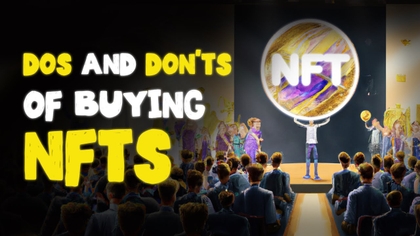


- Secure and reliable
- Accepts fiat currencies
- Lots of trading options
- Reputable exchange
- Accepts fiat currencies
- Offers various trading options

- Huge trading variety
- Regulation-compliant around the globe
- Fair trading fees
- Beginner-friendly
- A wide array of features
- Vast number of different crypto coins & tokens

- Beginner-friendly
- Secure
- Decent trading and withdrawal fees
- Crypto.com Visa Card
- Automated tools & bots
- Ecosystem synergy with CRO
CFD Bitcoin Trading Tips
Now that we've covered some valuable strategies for Bitcoin CFD trading, let's learn some helpful tips to guide you through the volatile market.
Practice With a Demo Account First
Before you jump into live trading, it would be a great idea to start with a demo account. This lets you practice trading without risking real money. Many brokers provide demo accounts that replicate actual market conditions.
Using a demo account can be helpful since it lets you get the hang of the platform, try out different trading tactics, and get a sense of how the market works. Try to take your demo trading seriously, treating it as if you were trading with real money, to develop good trading habits.
Apply Fundamental Analysis
Fundamental analysis is about understanding the actual value of an asset by looking at various economic, financial, and other factors. In Bitcoin CFDs, it means staying up-to-date with news and developments that could sway Bitcoin's price, like regulatory announcements, tech advances, and global economic shifts.
Make sure to keep tabs on Bitcoin-related news. You can use the BitDegree news portal to analyze how different events might affect the market. For example, good news about Bitcoin adoption or regulatory approval can push prices higher, while bad news about bans or security issues can cause drops.

Diversify Your Assets
Diversification is an essential strategy for risk management. Instead of going all-in on Bitcoin CFDs because you think BTC will reach an all-time high soon, try to spread your portfolio across various assets.
It can help you mitigate losses. When one asset underperforms, others may perform better. Diversifying your portfolio can provide a more stable investment journey and protect against market volatility.
You can consider branching out to other cryptocurrency CFDs, like ETH or BNB. For broader diversification, you can explore popular crypto exchanges like Binance or Kraken for a wider range of virtual assets and other derivatives.
Keep Your Emotions in Check
Emotions can disrupt your decisions. Fear and greed often lead to impulsive actions, resulting in substantial losses. It's vital to remain emotionally detached from your trades and stick to your trading plan.
It's important to have a well-defined plan and adhere to it, regardless of transitory market fluctuations. Implement stop-loss and take-profit orders to automate trade management and avoid emotional decisions.
Conclusions
To recap, Bitcoin CFD trading offers a way to potentially profit from BTC price movements without owning the cryptocurrency. It's like making predictions about whether the BTC price will go up or down. This method can be pretty appealing because, unlike just buying Bitcoin, you have the chance to make money even if the market goes down.
Of course, there are risks involved. One is leverage, which can amplify both your gains and losses. Also, it would be best if you remembered that the crypto market is very volatile. So, you need to prepare well-developed trading strategies to avoid financial disaster. Remember to make sure you understand the involved risk and start small.
But, if you think cryptocurrency CFDs are not for you, don't worry! There are plenty of other options to explore. You can visit popular cryptocurrency exchanges, like Binance, Kraken, or Bybit, to dive into the vast selection of other digital assets that may work for you.
The key is to find an approach that matches your risk tolerance and financial goals!
The content published on this website is not aimed to give any kind of financial, investment, trading, or any other form of advice. BitDegree.org does not endorse or suggest you to buy, sell or hold any kind of cryptocurrency. Before making financial investment decisions, do consult your financial advisor.
Scientific References
1. O. Alao, P. Cuffe: 'Towards a blockchain contract-for-difference financial instrument for hedging renewable electricity transactions';
2. Z. Wang, K. Qin, D. V. Minh, et al: 'Speculative multipliers on DeFi: Quantifying on-chain leverage risks'.
